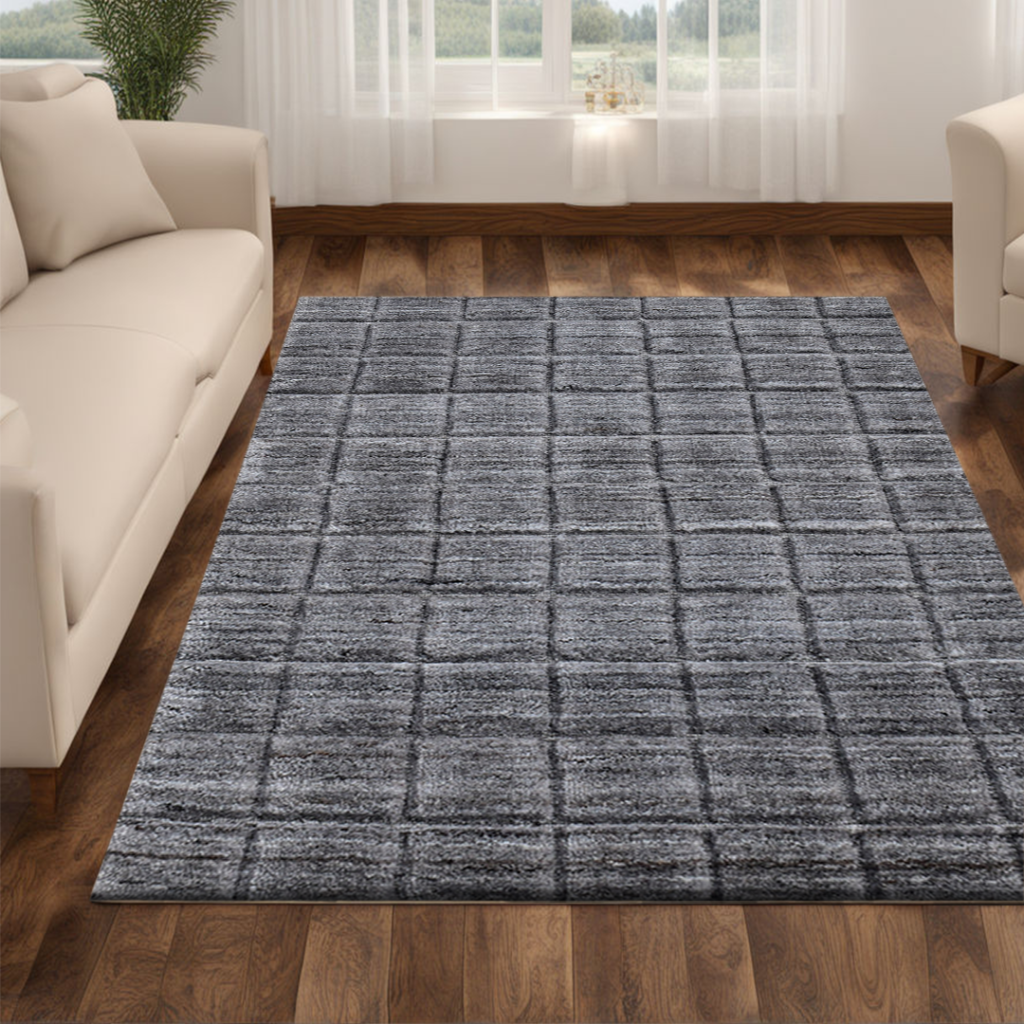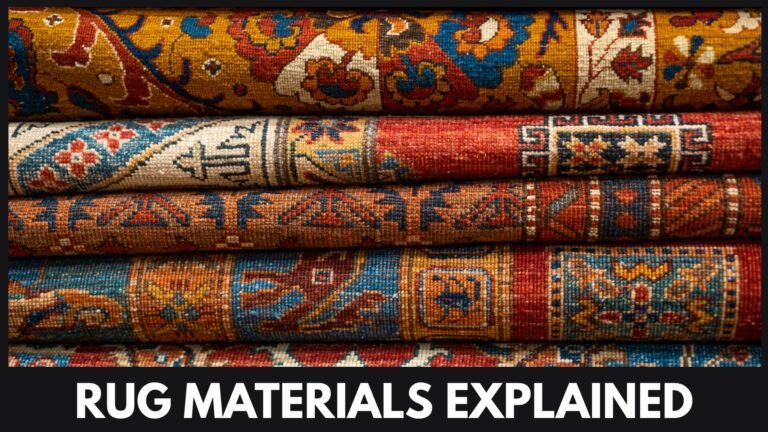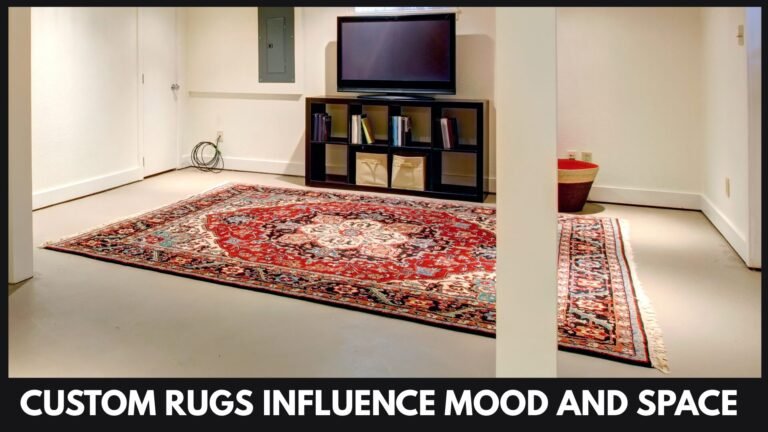
Budget Considerations: What to Expect When Ordering a Custom Rug
A custom rug can bring style, comfort, and functionality to your home. Unlike mass-produced rugs, a custom piece lets you choose specific dimensions, materials, colors, and patterns. However, deciding to invest in a custom rug involves some financial planning. Because you have a wide range of options – from premium wool to modern synthetics, or intricate designs to simpler layouts – the cost can vary greatly.
Table of Contents
1. Material: The Foundation of Costs

1.1 Wool vs. Synthetic vs. Silk
The choice of material is often the most visible factor in the cost of a custom rug. A rug made from natural wool typically costs more than a synthetic one because wool is a renewable fiber that requires skilled extraction and processing. Wool also lasts longer, is warm underfoot, and has a pleasant, natural appearance.
Silk usually sits at the high end of the price scale. Known for its delicate texture and slight shine, silk can produce very fine patterns. However, it is more expensive due to the labor-intensive process of gathering and weaving silk threads. Synthetic fibers, like polypropylene or nylon, are generally cheaper. They can mimic some of the traits of wool or silk but may not offer the same warmth or luster.
1.2 Wool Blends
If you like the feel of wool but have a limited budget, a wool-blend rug can be a good compromise. Such blends may include wool combined with cotton or other fibers, lowering the cost while keeping some benefits of wool, such as softness and durability.
1.3 Regional Differences
The type of wool or synthetic fiber can also affect the price. For instance, wool from certain countries or regions might be sturdier or have a particular texture, leading to a higher price. You can talk to Carpetsandrug to learn about the various grades of wool or synthetic fibers available in your price range.
2. Knot Density and Weaving Method

2.1 Hand-Knotted vs. Machine-Made
A large part of a rug’s beauty comes from its weaving technique. Hand-knotted rugs require more time and skill. Each thread is individually knotted to create intricate patterns. This labor-intensive method typically results in a rug that lasts a long time but can cost more, particularly for high knot counts. Machine-made rugs, although often more affordable, may not hold the same level of detail or durability.
2.2 Knot Density
Knot density, often measured in knots per square inch (KPSI), greatly influences price. A higher KPSI means more labor and detail, and thus a higher cost. For example, a rug with 200 KPSI will often be more expensive than one with 100 KPSI, though this also depends on design complexity.
- Lower KPSI (Under 100): Generally more budget-friendly but may show less detail in patterns.
- Medium KPSI (100–200): A good balance between price and intricacy.
- High KPSI (200+): Premium designs with refined motifs but usually at a higher cost.
2.3 Weaving Time and Artisan Skill
Time is money in rug production. If a piece has a complex design with tight knots, weavers spend extra hours ensuring accuracy. Skilled artisans, especially those who have mastered traditional weaving styles, may command higher wages. The end result is often a rug of high quality that can become a centerpiece in your home for many years.
3. Size and Shape
3.1 Room Dimensions Matter
Unsurprisingly, the size of the rug is a big factor in cost because it demands more raw material and additional weaving time. Larger rugs naturally cost more than small accent pieces. Make sure to measure your space carefully and decide whether you need the rug to sit under furniture or cover a specific seating area. This approach helps avoid ordering a rug bigger than necessary.
3.2 Unusual Shapes
Rectangular rugs are standard and often cheaper to produce. Unique shapes—like round, oval, or hexagonal—might add to the cost. This is because the weaving or cutting process can be trickier and might involve extra materials or specialized looms. If you have a curved or angled room layout, or simply prefer a creative shape, budget for the possibility that it will cost more.
3.3 Multiple Smaller Rugs vs. One Large Piece
If you have an open-plan layout, you may think about placing multiple smaller custom rugs in different zones rather than a single large rug. This can be beneficial if you wish to define each area differently or if your budget will not stretch to one enormous rug. However, remember that smaller rugs still require labor, so the combined cost of multiple pieces could sometimes match or exceed that of a single large rug. Compare quotes and styles to see which approach best fits your budget and design goals.
4. Design Complexity
4.1 Simple vs. Intricate Patterns
Rugs with bold, detailed motifs or repeating floral elements demand more weaving time and skill, which boosts the price. If you are on a limited budget but still desire a custom rug, consider a simpler design. Geometric shapes, subtle stripes, or minimal patterns can deliver visual impact without requiring extremely high knot density.
4.2 Color Palette
The number of colors in a custom rug can also affect costs. Each additional color may require separate dyeing processes or weaving changes. Complex color transitions, shading, or gradients can be particularly time-intensive. If budget is a concern, opt for fewer colors or simpler shading techniques.
4.3 Personalization and Unique Requests
Some clients request specific motifs that reflect personal interests, family emblems, or even custom artwork. While these changes can make the rug more meaningful, they might involve extra design work or specialized dyeing. If you have a unique concept in mind, clarify with the rug provider—like Carpetsandrug—whether these additions will raise the overall price significantly.
5. Brand Reputation and Service
5.1 Established Brands
A recognized brand may charge more than a lesser-known maker, but they typically provide higher quality assurance. This can include better materials, skilled artisans, and thorough oversight of each production step. Paying a premium for an established company may be well worth it if you want a rug with a longer lifespan and fewer manufacturing flaws.
5.2 Customer Support and Guidance
The best rug providers offer end-to-end support, from measuring your space and selecting the right materials, to final installation advice. This level of service can add value by saving you time, reducing mistakes, and making sure the rug meets your design goals. While this might be reflected in the price, it often leads to a more satisfying purchase in the long run.
5.3 Ethical Practices
Producers who follow fair labor practices and use eco-friendly materials may have higher manufacturing costs. However, purchasing from such businesses helps sustain artisan communities and reduces environmental harm. Before finalizing your order, ask about the company’s sourcing and labor policies if these issues are important to you.
6. Timeframe and Production Deadlines
6.1 Rush Orders
If you need a custom rug quickly, you might face rush fees or higher labor costs, since the weavers may have to prioritize your order. As a rule, the more urgent the job, the more likely you will pay a premium.
6.2 Standard Production Times
Handmade rugs can take anywhere from a few weeks to several months to complete, depending on size and complexity. A typical timeframe for a medium-sized rug with moderate detail could be around 6 to 12 weeks. Delays can happen due to raw material availability or shipping challenges.
6.3 Lead Times and Flexibility
Planning ahead can help you avoid steep delivery charges or scheduling difficulties. Discuss timelines with your chosen supplier early in the process. If you have flexibility, you might save by allowing the rug maker to complete your order during a less busy period.
7. Shipping and Import Duties
7.1 Location and Logistics
Shipping costs vary based on your location and the supplier’s shipping method. If you order from outside India, you might face import duties, extra taxes, or currency conversion fees. Some providers include basic shipping in the quoted price, while others charge it separately.
7.2 Packaging and Handling
A large rug must be rolled and properly protected to avoid damage. Premium packaging materials and careful handling can add to the total cost. When comparing quotes, check if packaging costs are included or if they appear as separate charges.
7.3 Insurance
For a valuable, custom-made rug, consider insurance during shipping. Replacing or repairing a damaged piece might be costly, so paying for insurance can protect your investment. While this adds to your immediate expenses, it could save you from bigger financial losses if something goes wrong in transit.
8. Taxes and Hidden Fees
8.1 Sales Tax or GST
Depending on local regulations, your custom rug may be subject to national or state taxes. In India, Goods and Services Tax (GST) can apply to the final sale. Make sure you ask the supplier whether the price quote includes GST or if it will be added later.
8.2 Handling Charges
Some companies or shipping services tack on handling charges for large or bulky shipments. These fees might be minimal or substantial, depending on the weight and dimensions of the rug.
8.3 Payment Terms
Be aware of the supplier’s payment structure. Some require an advance deposit, while others offer installment plans. If the supplier is located overseas, currency exchange rates can also influence the final price. Clarifying these details helps you avoid unwelcome surprises.
9. Maintenance and Long-Term Expenses
9.1 Routine Cleaning
A custom rug, especially a high-end one, will need proper care. Beyond simple vacuuming, certain materials require professional cleaning or annual maintenance. Keep in mind that regular care is necessary to maintain your rug’s appearance and structural integrity.
9.2 Repair and Restoration
Even the best-made rug may experience normal wear over time. If you have a loop or thread that comes loose, you might pay for small repairs. Having a sense of future repair costs can be helpful, especially if you are selecting delicate materials like silk.
9.3 Rug Pads and Accessories
Sometimes, a rug pad is recommended to prevent slippage on smooth floors, adding both comfort and protection to your rug. While not a large expense compared to the rug itself, it is still an extra cost worth factoring into your overall budget.
10. Cost-Saving Tips Without Reducing Quality
10.1 Simplify the Design
If your budget is tight, choosing a simpler pattern can lower weaving time and costs. Fewer colors and less intricate designs often make a rug more affordable, yet still distinctive.
10.2 Opt for Blended Materials
A wool-synthetic blend can provide many of wool’s benefits at a lower price. Similarly, partial silk highlights can give a luxurious feel without the full expense of a pure silk rug.
10.3 Adjust the Size
If you are aiming to cover an entire room but find the cost too high, consider reducing the rug’s dimensions to a seating area or a focal zone. This way, you still get custom quality but at a lower price.
10.4 Plan Ahead
Avoid rush orders and discuss flexible timelines with your rug maker. This allows them to schedule your rug’s production in a cost-efficient way, potentially passing savings on to you.
10.5 Request Multiple Quotes
It can be helpful to gather quotes from different suppliers for the same specs. While cost should not be your only factor, comparing prices and service levels can guide you to the best value.
11. Why Carpetsandrug Is a Reliable Option
When you decide to buy a custom rug, turning to an expert brand like Carpetsandrug can simplify many challenges:
- Wide Variety of Materials: They offer everything from pure wool to mixed fibers and can clarify the pros and cons of each choice.
- Skilled Artisans: Their network of weavers has considerable experience in producing high-quality rugs. You can count on attention to detail, especially for complex or traditional designs.
- Transparent Pricing: The team at Carpetsandrug aims to provide clear quotes, stating whether shipping, taxes, or any other fees are included. This helps you stay within budget.
- Expert Guidance: Unsure about the best size, color palette, or pattern for your home? Their customer support can advise you, ensuring your custom rug suits both your preferences and financial limits.
- Post-Sales Support: Beyond delivery, they offer suggestions on rug maintenance and cleaning. This extends the life of your custom piece, safeguarding your investment.
12. Conclusion
Ordering a custom rug can be a rewarding but significant financial commitment. When you invest time in understanding the various cost elements—materials, weaving complexity, size, brand reputation, shipping, and more—you gain control over your spending. This knowledge allows you to adjust your requirements in a balanced way, so you get a rug that fits both your style and your budget.
Whether you choose wool for a warm, classic appearance, silk for a refined surface, or synthetics for easy care and affordability, each material has unique advantages. The overall cost also hinges on how intricate your design is, the rug’s dimensions, and your choice of brand. Some expenses, like shipping or import charges, might come as a surprise if not planned in advance, so be sure to ask your supplier for a complete cost breakdown.
Buying from an experienced supplier like Carpetsandrug can ease some of the worries. They guide you at each step—from the early concept phase all the way to delivery—making sure you understand and accept every aspect of the budget. Although saving money is important, remember that a well-made custom rug will typically last for years and add character to any space. With proper planning, you can find that sweet spot between quality and affordability, ensuring your rug remains a source of satisfaction for a long time.
Frequently Asked Questions
- How do I know if the quoted price for a custom rug is fair for its size and material?
Compare quotes from different suppliers and make sure you understand if the pricing includes shipping, taxes, or extra design work. - Are handmade wool rugs always more expensive than machine-made synthetic rugs?
Generally, yes, because handmade rugs demand more labor and higher-quality materials. However, deals or sales can sometimes make the price gap smaller. - How do shipping charges usually get calculated for large rugs?
Many suppliers base this on the rug’s weight and dimensions. Some include standard shipping in their quotes, while others charge separately. - Is it possible to reduce the cost by choosing fewer colors in the design?
Yes, limiting the color palette can simplify the weaving process, potentially reducing labor and dyeing costs. - Can I pay in installments for a custom rug if my budget is limited?
Many providers offer flexible payment plans. Always confirm the terms, such as the deposit amount and any interest charges, to avoid misunderstandings later.



